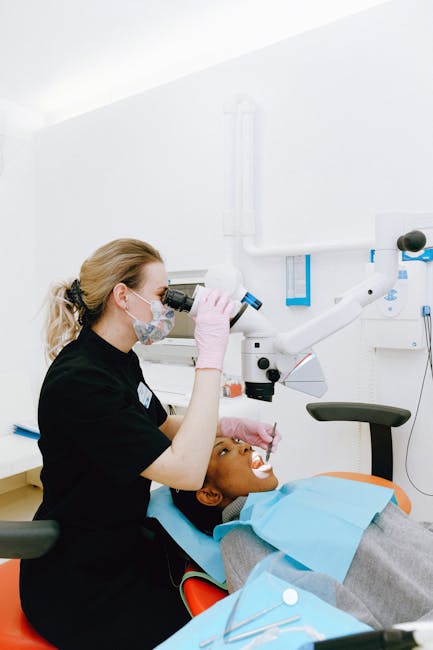Is Prostate Cancer Slow Growing? Understanding Growth Rates and Treatment Options
Is Prostate Cancer Slow Growing? Understanding Growth Rates and Treatment Options
Prostate cancer is a prevalent disease, affecting a significant portion of the male population. One of the most crucial questions men and their healthcare providers grapple with is the speed at which this cancer progresses. The simple answer is: it varies greatly. While some prostate cancers are aggressive and rapidly growing, many others are slow-growing, meaning they may not pose an immediate threat to life or health. This article delves deep into the nuances of prostate cancer growth rates, exploring factors that influence progression, diagnostic methods, and the implications for treatment decisions.
Understanding Prostate Cancer Growth Rates
The growth rate of prostate cancer is highly variable and depends on several factors. It’s not a uniform disease; different cancers behave differently, even within the same individual. Some cancers are indolent, meaning they grow very slowly and may never cause significant problems. Others are aggressive, spreading rapidly and potentially causing severe health issues. This variability makes accurate prediction challenging, highlighting the importance of individual assessment and personalized treatment plans.

Factors Influencing Prostate Cancer Growth Rate
- Gleason Score: This is a crucial factor in determining the aggressiveness of prostate cancer. The Gleason score is a grading system based on how abnormal the cancer cells appear under a microscope. A higher Gleason score indicates more aggressive cancer, suggesting faster growth.
- Stage of Cancer: The stage of cancer at diagnosis significantly impacts its growth rate. Early-stage prostate cancer is generally slower-growing than advanced-stage cancer, which has spread to other parts of the body.
- PSA Levels: Prostate-specific antigen (PSA) is a protein produced by the prostate gland. Elevated PSA levels can indicate prostate cancer, and the rate of PSA increase can sometimes reflect cancer growth speed. However, PSA levels are not entirely reliable for predicting growth rate independently.
- Tumor Size and Volume: Larger tumors tend to have a higher risk of aggressive behavior and faster growth compared to smaller tumors. However, this is not always the case, and small, aggressive cancers exist.
- Genetic Factors: Family history of prostate cancer can increase the risk of developing the disease, and specific genetic mutations might influence growth rate.
- Age: The age at diagnosis can correlate with growth rate. Younger men often tend to present with more aggressive forms of prostate cancer than older men, however, this is not a definitive indicator.
- Race and Ethnicity: Studies suggest that racial and ethnic disparities exist in prostate cancer incidence and aggressiveness. African American men often experience more aggressive disease and higher mortality rates.
Diagnosing Slow-Growing Prostate Cancer
Diagnosing slow-growing prostate cancer requires a comprehensive approach, combining several diagnostic tools to accurately assess the tumor’s characteristics and growth potential. The goal is not only to detect the presence of cancer but also to characterize it, determining its aggressiveness and the need for immediate intervention.
Key Diagnostic Tests
- Digital Rectal Exam (DRE): This physical examination allows the doctor to palpate the prostate gland, detecting any abnormalities in size, shape, or consistency.
- Prostate-Specific Antigen (PSA) Test: A blood test measuring PSA levels. Elevated PSA can indicate prostate cancer, although it’s not always conclusive.
- Prostate Biopsy: A tissue sample is taken from the prostate gland and examined under a microscope to confirm the presence of cancer and determine its grade (Gleason score).
- MRI and Ultrasound: Imaging techniques that can provide detailed images of the prostate gland, helping to visualize tumor location and size.
- Bone Scan: If cancer has spread beyond the prostate, a bone scan can detect metastasis to the bones.
Treatment Options for Slow-Growing Prostate Cancer
The treatment strategy for slow-growing prostate cancer often involves a watchful waiting approach, also known as active surveillance. This involves close monitoring of the disease through regular PSA tests, DREs, and biopsies without immediate intervention. The decision to pursue active treatment or watchful waiting depends on various factors, including the patient’s age, overall health, and the characteristics of the cancer.
Active Surveillance
Active surveillance involves regular monitoring of PSA levels and other diagnostic tests. If the cancer shows signs of progression or becomes more aggressive, active treatment is initiated. This approach avoids unnecessary interventions and their potential side effects in cases where the cancer is unlikely to cause harm.
Active Treatment Options
If active treatment is necessary, several options are available, including:
- Radical Prostatectomy: Surgical removal of the prostate gland.
- Radiation Therapy: Using high-energy radiation to destroy cancer cells.
- Hormone Therapy: Reducing the production of testosterone, which fuels prostate cancer growth.
- Chemotherapy: Using medications to kill cancer cells.
- Cryotherapy: Freezing the cancer cells to destroy them.
- High-Intensity Focused Ultrasound (HIFU): Using focused ultrasound waves to destroy cancer cells.
Living with Slow-Growing Prostate Cancer
For men diagnosed with slow-growing prostate cancer, managing the condition often involves a balance of medical monitoring and lifestyle adjustments. Maintaining a healthy lifestyle, including regular exercise, a balanced diet, and stress management techniques, can contribute to overall well-being. Regular communication with healthcare providers is crucial for staying informed and making informed decisions regarding treatment and monitoring.

Psychological Well-being
A prostate cancer diagnosis, even a slow-growing one, can be emotionally challenging. Access to support groups, counseling, and psychological resources can help manage anxiety and stress, improving quality of life.
Conclusion: Individualized Approach is Key
Determining whether prostate cancer is slow-growing requires a comprehensive assessment of multiple factors. There’s no one-size-fits-all answer; each case needs to be evaluated individually. Close collaboration between the patient and their healthcare team is crucial in making informed treatment decisions, balancing the potential benefits and risks of different approaches. The goal is to develop a personalized strategy that effectively manages the disease while preserving the patient’s quality of life.

This information is for educational purposes only and should not be considered medical advice. Always consult with a qualified healthcare professional for diagnosis and treatment recommendations.






